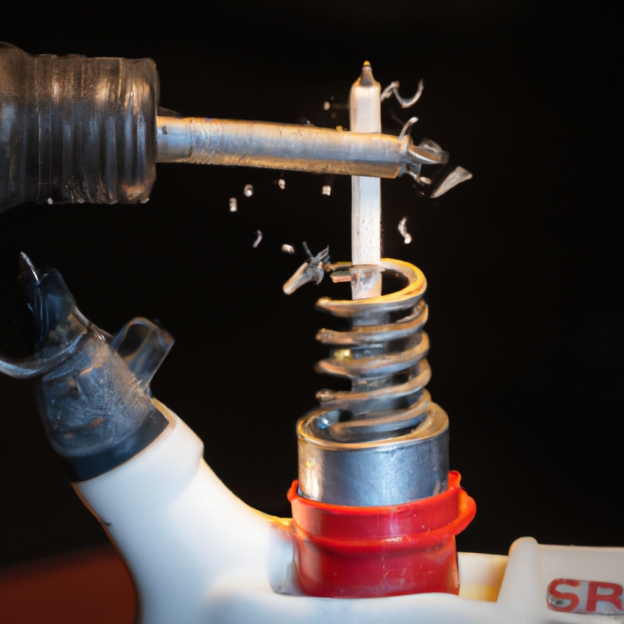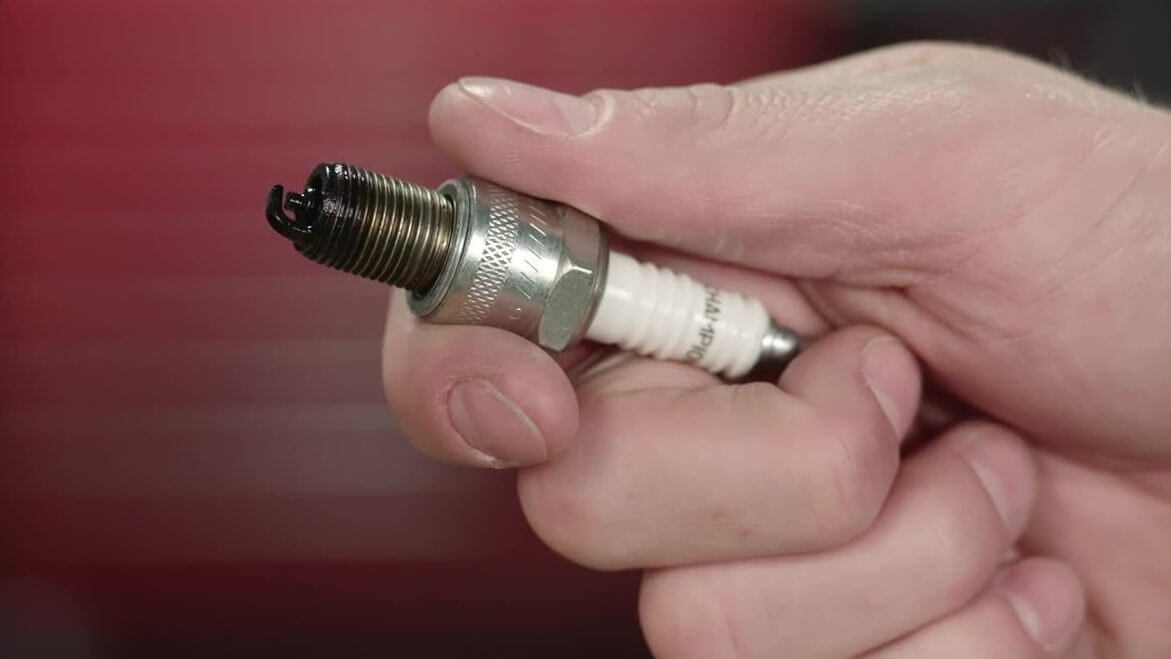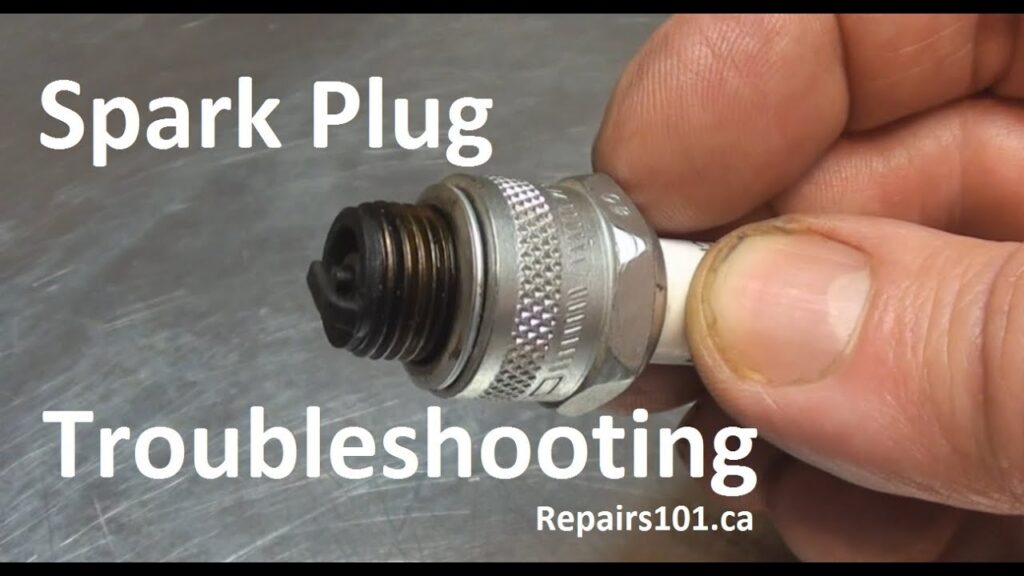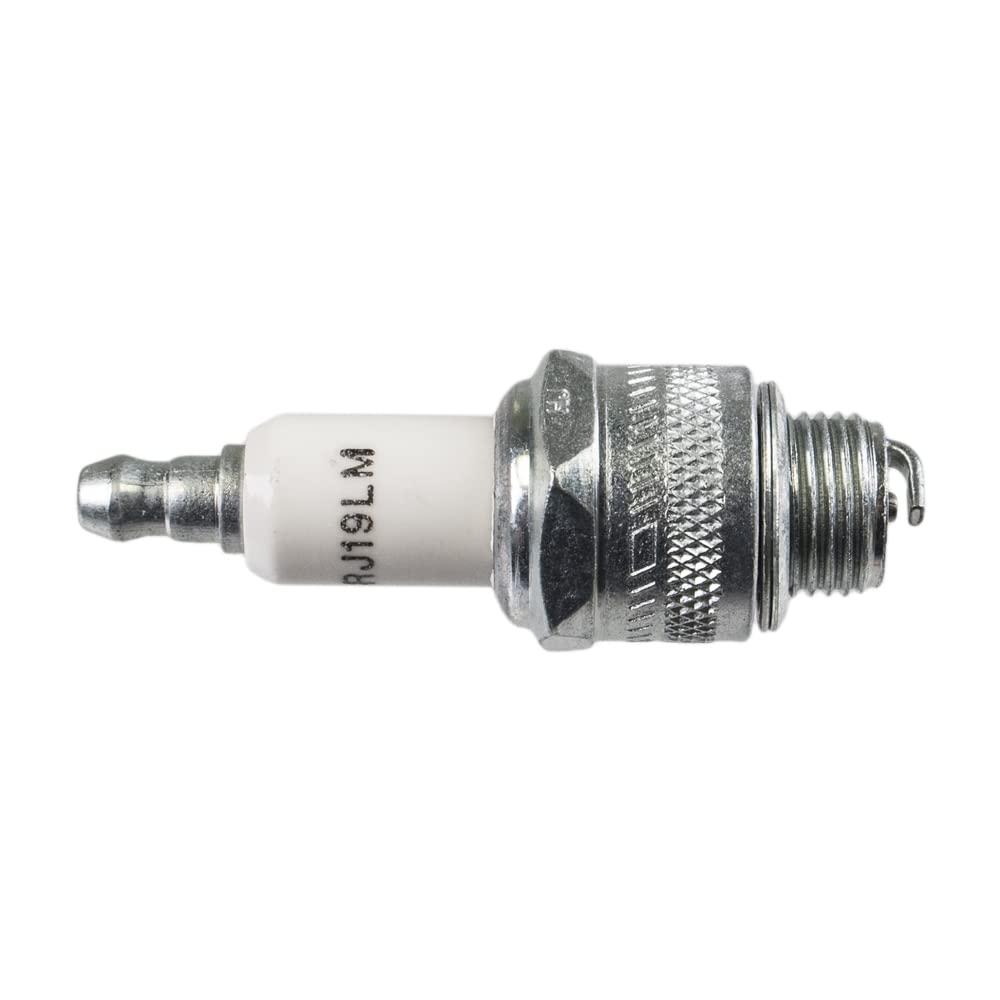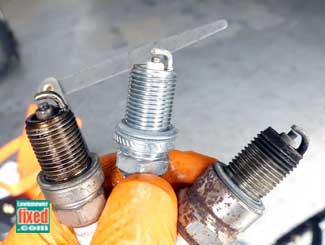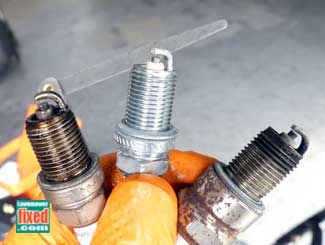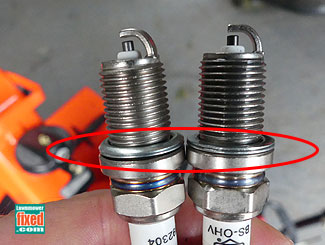Are you wondering how frequently you should replace the spark plug in your snowblower? Well, look no further because we’ve got the answer for you. The spark plug in your snowblower plays a crucial role in the efficient functioning of your machine, enabling it to start up and run smoothly. Over time, however, the spark plug can wear out or become dirty, leading to performance issues. But fear not, we’ll guide you through the recommended replacement frequency for your snowblower’s spark plug, ensuring it keeps running like a charm, even in the harshest winter conditions.

Factors Affecting Spark Plug Replacement Frequency
Usage Frequency
The frequency with which you use your snowblower plays a significant role in determining how often you should replace the spark plug. If you frequently use your snowblower for long periods or in demanding conditions, the spark plug will wear out more quickly and require more frequent replacement.
Type of Fuel Used
The type of fuel you use in your snowblower can also impact how often you need to replace the spark plug. Ethanol-blended fuels, commonly used in many gas stations, can lead to increased deposits and corrosion on the spark plug, shortening its lifespan. Additionally, using low-quality fuel can also affect the performance and longevity of the spark plug.
Spark Plug Condition
The current condition of your spark plug is another important factor to consider. If you notice any signs of wear or damage, such as excessive electrode erosion, cracked ceramic insulator, or a worn-out electrode gap, it may be necessary to replace the spark plug sooner rather than later.
Manufacturer’s Recommendations
Lastly, it is crucial to consider the recommendations provided by the snowblower manufacturer. They may have specific guidelines or intervals for spark plug replacement based on the model and engine specifications. Following their recommendations can help ensure optimal performance and prevent potential damage to the engine.
Normal Spark Plug Lifespan
Dependence on Hours of Usage
The lifespan of a spark plug is closely linked to the number of hours it has been in use. As the spark plug ignites the air and fuel mixture in the engine cylinder, it gradually wears down due to the electrical and thermal stresses. The more hours of operation a spark plug has accumulated, the more likely it is to require replacement.
Typical Lifespan in Hours
While there is no exact lifespan for a spark plug, most manufacturers suggest replacing it after approximately 100 hours of use. However, this can vary depending on various factors such as usage conditions, fuel quality, and maintenance practices. It is essential to monitor the performance and condition of the spark plug regularly to determine when replacement is necessary.
Signs of a Worn-out Spark Plug
Recognizing the signs of a worn-out spark plug can help you determine if replacement is needed. Some common indications include difficulty starting the snowblower, engine misfires or rough idling, decreased performance, increased fuel consumption, and the presence of black sooty deposits on the spark plug. If you experience any of these symptoms, it is advisable to inspect and replace the spark plug if necessary.
Symptoms of a Malfunctioning Spark Plug
Difficult Starting
A worn-out spark plug can make it challenging to start your snowblower. If you find yourself struggling to start the engine, especially in colder temperatures, it could be an indication that the spark plug needs replacement. A faulty spark plug can cause a weak or inconsistent spark, resulting in difficulty starting the engine.
Engine Misfires
When a spark plug is nearing the end of its lifespan, it may result in engine misfires. This can manifest as irregular or interrupted combustion in the engine, leading to a rough and uneven running engine. Misfires can cause reduced performance, increased vibration, and even potential damage to engine components if left unaddressed.
Poor Performance
A snowblower with a malfunctioning spark plug may exhibit decreased overall performance. You may notice a loss of power, reduced engine acceleration, or decreased efficiency in clearing snow. Addressing the spark plug issue promptly by replacing it can help restore the snowblower’s performance and ensure optimal operation.
Increased Fuel Consumption
A worn-out spark plug can lead to inefficient fuel combustion, resulting in increased fuel consumption. If you find that your snowblower is consuming more fuel than usual for the same operation, it may be an indication that the spark plug is not igniting the fuel-air mixture effectively. Replacing the spark plug can help improve fuel efficiency and save you money in the long run.
Black Sooty Deposits
Another visible sign of a malfunctioning spark plug is the presence of black sooty deposits on the spark plug’s electrodes or insulator. These deposits can interfere with the spark plug’s performance, inhibiting proper spark formation and combustion. Regular inspection and cleaning of the spark plug can help prevent the buildup of these deposits and ensure optimal functioning.

Importance of Timely Spark Plug Replacement
Enhanced Engine Performance
By replacing the spark plug at the recommended intervals or as soon as signs of wear appear, you can significantly enhance your snowblower’s engine performance. A fresh spark plug provides a consistent and strong spark, facilitating efficient combustion and optimal engine operation.
Improved Fuel Efficiency
A worn-out spark plug can lead to incomplete combustion, resulting in higher fuel consumption. By replacing the spark plug when needed, you can achieve better fuel efficiency, reducing the amount of fuel needed for snowblowing tasks. This not only saves money but also reduces your environmental impact.
Reduced Emissions
A properly functioning spark plug promotes complete combustion, minimizing the production of harmful emissions. By replacing the spark plug as recommended, you can help reduce the emission of pollutants into the atmosphere. This is particularly important for those who prioritize environmentally-friendly practices and want to minimize their carbon footprint.
Prevention of Damage to Engine Components
A malfunctioning spark plug not only affects the snowblower’s performance but can also lead to damage to other engine components. Inefficient combustion caused by a worn-out spark plug can result in increased heat and stress on the engine, potentially leading to costly repairs or premature engine failure. Timely spark plug replacement is key to preserving the overall health of your snowblower.
Replacing Spark Plugs Based on Usage Frequency
Every Season
As part of your snowblower’s regular maintenance routine, it is recommended to replace the spark plug at the beginning of each snowblowing season. This helps ensure that you start the season with a fresh plug, ready to deliver optimal performance.
After a Certain Number of Hours
If your snowblower manual specifies a specific interval or number of operating hours for spark plug replacement, it is essential to follow those guidelines. This ensures that the spark plug is replaced before it becomes excessively worn and potentially causes performance issues.
Annual Maintenance Routine
Including spark plug replacement as part of your annual snowblower maintenance routine can be an effective way to prevent untimely breakdowns and ensure consistent performance. By inspecting and replacing the spark plug during regular maintenance, you can address any potential problems before they escalate.
Impact of Fuel Type on Spark Plug Lifespan
Effect of Ethanol-Blended Fuels
The use of ethanol-blended fuels in snowblowers has become increasingly common. However, these fuels can have a detrimental effect on spark plug lifespan. Ethanol can attract moisture, leading to the formation of deposits and corrosion on the spark plug. To mitigate this, it is important to use fuel stabilizers and consider more frequent spark plug inspections and replacements.
Consequences of Using Low-Quality Fuel
Using low-quality fuel, such as gasoline with contaminants or a low octane rating, can also impact spark plug lifespan. Poor-quality fuel can lead to deposits on the spark plug electrodes and reduce overall spark plug performance. Choosing high-quality fuel from reputable sources can help maintain spark plug longevity and ensure optimal snowblower performance.
Recommendations for Fuel Selection
To extend the lifespan of your spark plug, it is recommended to use high-quality gasoline with the appropriate octane rating. When using ethanol-blended fuels, it is crucial to add a fuel stabilizer to reduce the negative effects of moisture absorption. Additionally, following the manufacturer’s recommendations regarding fuel selection can help maintain the spark plug’s performance and lifespan.
Evaluation of Spark Plug Condition
Visual Inspection
Regularly inspecting the spark plug can provide valuable insights into its condition. Look for signs of wear, such as excessive electrode erosion, cracks in the ceramic insulator, or oil deposits. If any abnormalities are observed, it may be necessary to clean or replace the spark plug.
Checking Electrode Gap
The electrode gap is an essential factor for proper spark plug performance. Over time, the gap may become wider or narrower, affecting the spark’s strength. Use a spark plug gap tool to measure the gap, and if necessary, adjust it to match the manufacturer’s specifications. Incorrect electrode gap can lead to performance issues and ultimately necessitate spark plug replacement.
Spark Plug Cleaning and Re-Gapping
In some cases, the spark plug may be dirty or fouled, affecting its performance. Cleaning the spark plug using a specialized cleaner can help remove built-up deposits and improve spark production. Additionally, re-gapping the electrode to the correct specifications ensures optimal performance before reinstalling the spark plug.
Spark Plug Replacement
If the spark plug shows significant wear, damage, or cleaning proves ineffective, it is advisable to replace it with a new one. This ensures that you have a fresh spark plug with optimal performance and reliability, ready for your snowblowing tasks.
Manufacturer’s Recommendations
Reviewing Snowblower Manual
The snowblower manual is an invaluable resource for understanding the manufacturer’s recommendations regarding spark plug replacement. It provides specific guidelines based on the snowblower model, engine type, and usage conditions. Reviewing the manual thoroughly can help ensure that you follow the manufacturer’s preferred practices.
Following Guidelines from the Manufacturer
The manufacturer’s guidelines should be strictly followed when it comes to spark plug replacement. They have designed and tested their snowblower models, including recommended spark plug replacement intervals, based on performance and longevity. By adhering to their guidelines, you can maximize the longevity and performance of your snowblower.
Considering Specific Engine Models
Different engine models may have unique spark plug requirements or intervals for replacement. If you have a snowblower with a specific engine model, it is essential to take that into consideration when determining when to replace the spark plug. Consult the engine manufacturer’s recommendations or consult a professional for guidance if needed.
Tips for Extending Spark Plug Lifespan
Proper Storage During Off-Season
When your snowblower is not in use, proper storage is crucial for maintaining spark plug health. Ensure that the snowblower is stored in a dry and clean location, preferably indoors, to prevent moisture or debris from affecting the spark plug’s performance. Following the manufacturer’s storage guidelines can help protect the spark plug and other engine components.
Using Fuel Stabilizers
Adding a fuel stabilizer to the fuel tank can help prevent the negative effects of ethanol and moisture on the spark plug. Fuel stabilizers inhibit the absorption of moisture by the fuel, reducing the risk of corrosion and deposits in the spark plug. This, in turn, helps maintain its performance and overall lifespan.
Regular Maintenance and Cleaning
Regular maintenance is essential to ensure the optimal lifespan of the spark plug. This includes periodic inspections, cleaning if necessary, and adjusting the electrode gap when required. By incorporating spark plug maintenance into your routine, you can detect and address any issues early on, preventing premature failure.
Avoiding Over-tightening
When installing or replacing a spark plug, it is important not to over-tighten it. Over-tightening can damage the spark plug or threads in the cylinder head, leading to potential leaks or other issues. Follow the manufacturer’s torque specifications to ensure proper installation without causing any detrimental effects.
Preventing Fouling
Fouling occurs when the spark plug becomes covered in deposits or contaminants, hindering proper combustion. To prevent fouling, ensure the snowblower’s engine is properly tuned and not running too rich or lean. Additionally, avoiding prolonged idle periods and running the snowblower at its recommended operating speeds can help prevent fouling and extend the spark plug’s lifespan.
Conclusion
The spark plug in your snowblower is a crucial component that directly impacts its performance, efficiency, and overall lifespan. Factors such as usage frequency, fuel type, spark plug condition, and manufacturer’s recommendations all play a role in determining when to replace the spark plug. Regular inspection, maintenance, and timely replacement can enhance engine performance, improve fuel efficiency, reduce emissions, and prevent damage to engine components. By following the tips and considerations outlined in this article, you can maximize the lifespan and reliability of your snowblower’s spark plug, ensuring smooth snowblowing operations season after season.

